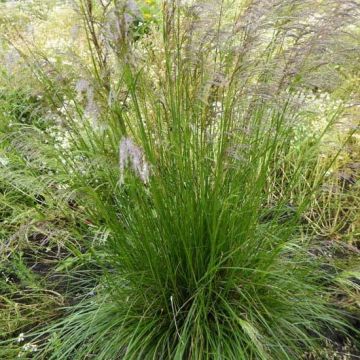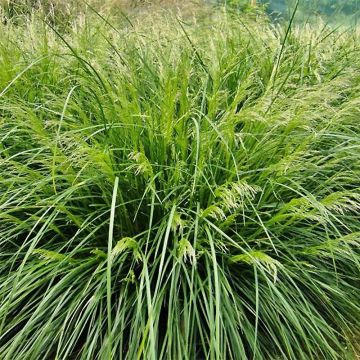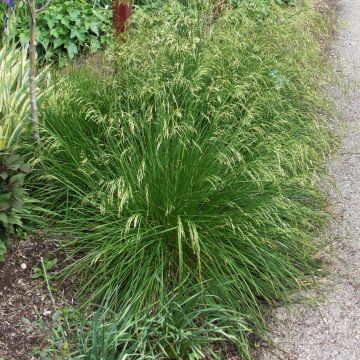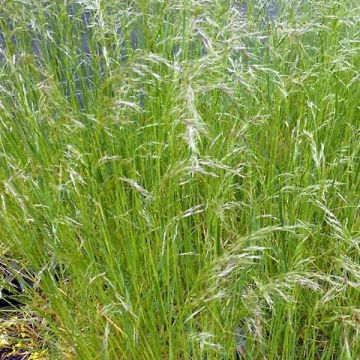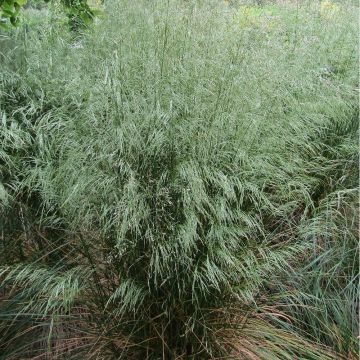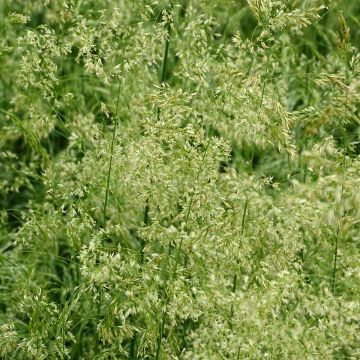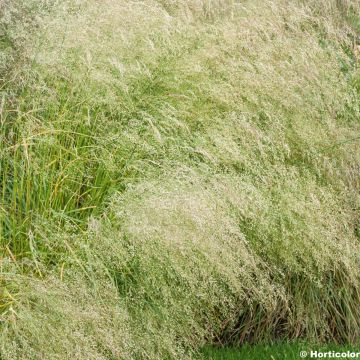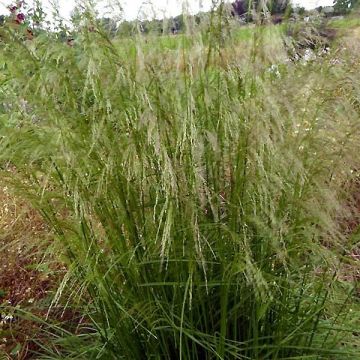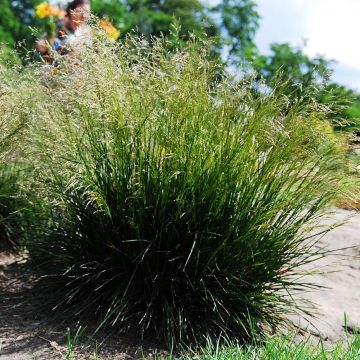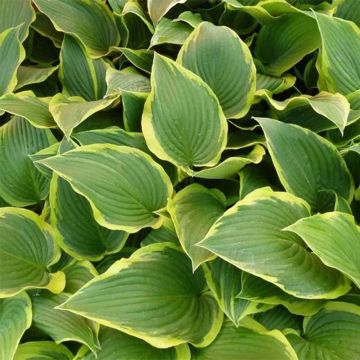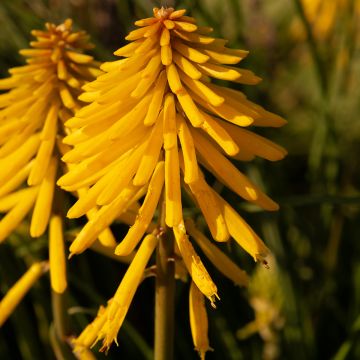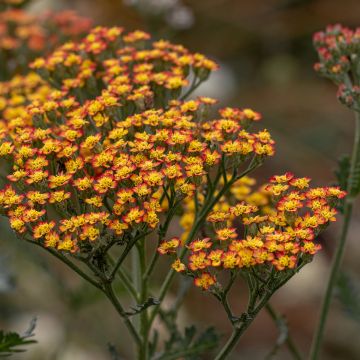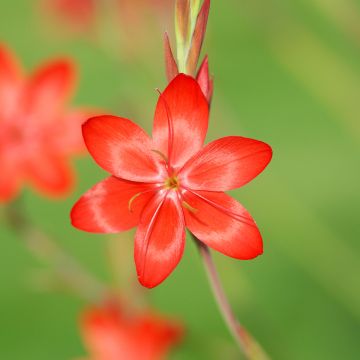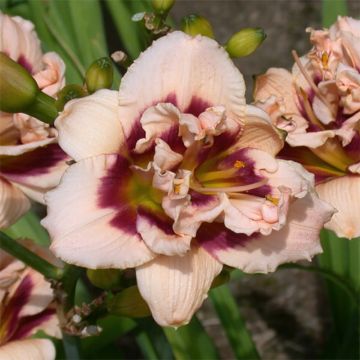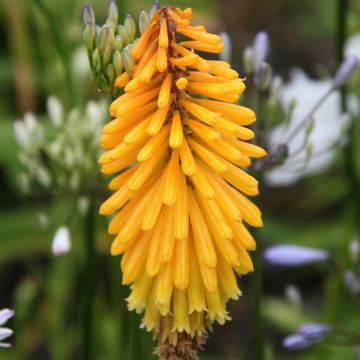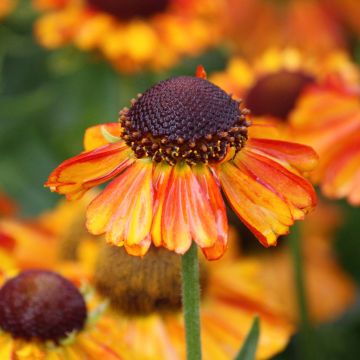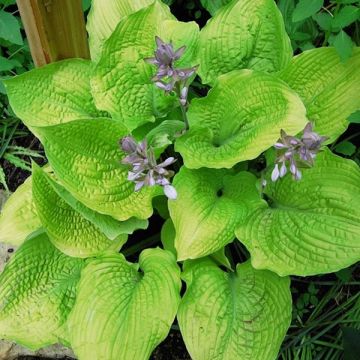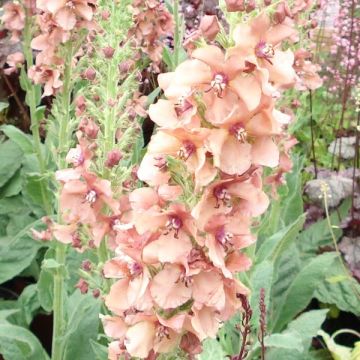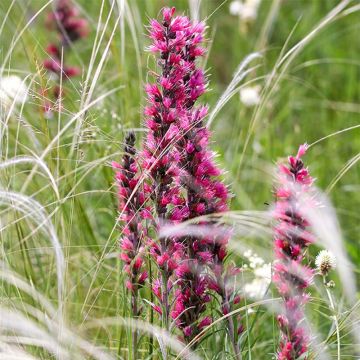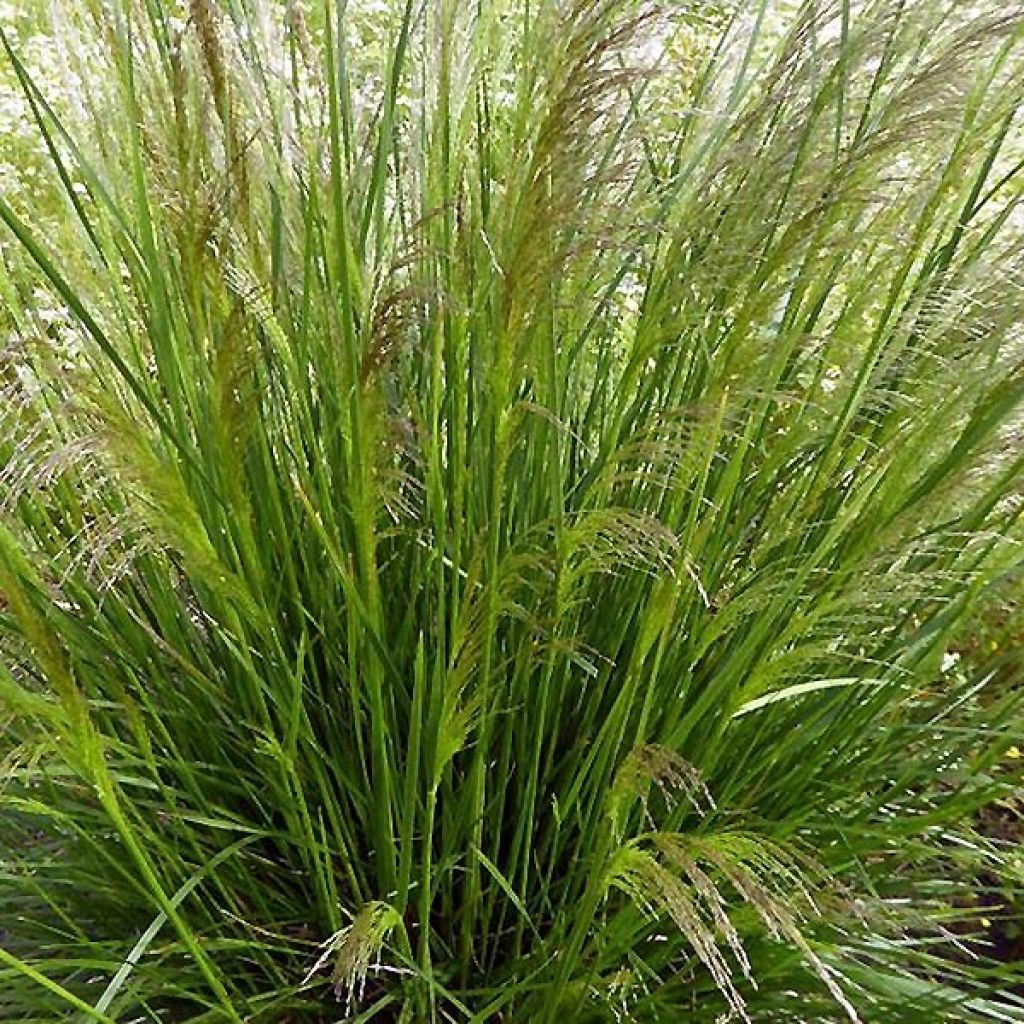

Deschampsia cespitosa Pixie Fountain
Deschampsia cespitosa Pixie Fountain
Deschampsia caespitosa Pixie Fountain
Tufted Hair Grass, Hassock Grass, Tussock grass
This item cannot be shipped to the selected country
Delivery charge from €5.90
More information
Schedule delivery date,
and select date in basket
This plant carries a 12 months recovery warranty
More information
We guarantee the quality of our plants for a full growing cycle, and will replace at our expense any plant that fails to recover under normal climatic and planting conditions.
From €5.90 for pickup delivery and €6.90 for home delivery
Express home delivery from €8.90.
Does this plant fit my garden?
Set up your Plantfit profile →
Description
Deschampsia cespitosa 'Pixie Fountain' is a small, variegated variety, with beautiful purple-silver flowers at the end of the season. This pretty perennial and evergreen grass forms a beautiful fountain of long and fine silver-green leaves, from which beautiful changing flowers emerge and fade beautifully. With its beautiful winter silhouette adorned with stalks and faded flowers, this grass is decorative all year round. This plant looks stunning in a contemporary setting, a wild garden, or planted in a pot on the terrace.
Deschampsia cespitosa is a densely tufted perennial, non-spreading grass, belonging to the poaceae family. It is native to Europe, temperate Asia, and boreal America, where it grows easily in various moist, uncultivated places. This extremely hardy, long-lived plant self-seeds quite easily, but the young seedlings will be easily eliminated.
The 'Pixie Fountain' cultivar forms a small upright clump 60 cm (24in) tall when in flower (40cm (16in) for the foliage), with a spread of 40 to cm. The silver-green evergreen leaves are flat, 2 to 5 mm (1in) wide, very rough, and often very long. Large inflorescences appear in the midst of the foliage from July to September in wide and fluffy spikes, borne by stiff stalks. They are formed of numerous small flowers initially silver-green, then turning more yellow-purple before becoming golden. These flowers become increasingly bright as the days go by.
Few scenes equal the almost unreal spectacle of an autumn sun flooding the mass of golden tufts. A fascinating and poetic tableau, easy to reproduce in our gardens because this very hardy plant is happy in any ordinary moist soil, even heavy clay. Deschampsia does not disturb neighbouring plantings and thrives at the edge of ponds. In a mass planting this grass will give its best, mixed with perennials with ample foliage such as Darmera or Ligularia, or even planted in large masses, to bring lightness and brightness to a wild garden. It will happily accompany daffodils, jonquils, and many late-season perennials (sneezeweed, echinacea, Japanese anemones, asters). It also grows well in a pot. Finally, its long inflorescences lighten fresh or dried bouquets.
Report an error about the product description
Deschampsia cespitosa Pixie Fountain in pictures
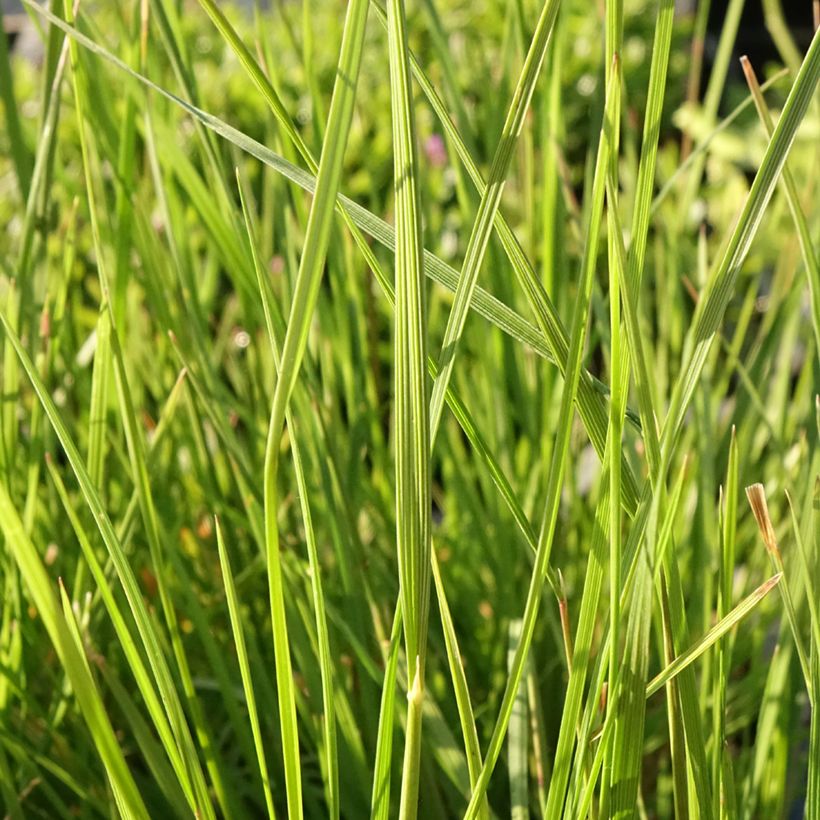

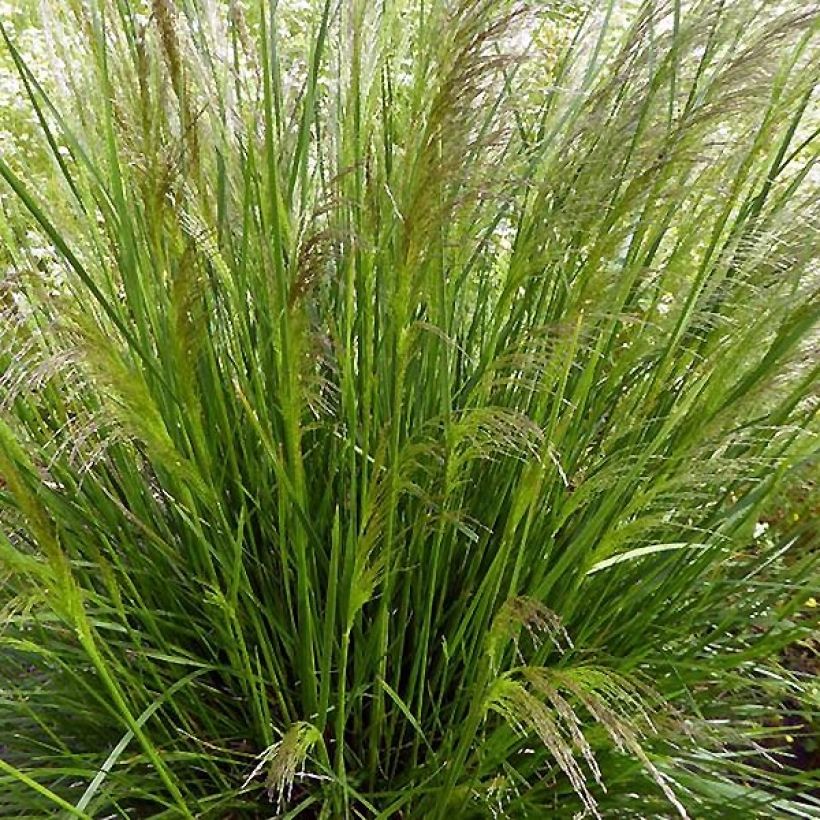

Flowering
Foliage
Plant habit
Safety measures
Botanical data
Deschampsia
caespitosa
Pixie Fountain
Poaceae
Tufted Hair Grass, Hassock Grass, Tussock grass
Cultivar or hybrid
atteinterespiratoire
Cette plante peut entraîner des symptômes allergiques.
Evitez de la planter si vous ou vos proches souffrez de rhinite saisonnière ("rhume des foins").
Davantage d'informations sur https://plantes-risque.info
Other Deschampsia
Planting and care
Deschampsia cespitosa and its varieties are hardy grasses that tolerate any ordinary soil but prefer it moist, even clayey or marshy. They require a sunny exposure. These grasses produce numerous spontaneous seedlings in moist soil, which are easy to remove if they are considered troublesome. You can apply mulch around their base to keep the soil moist in summer.
In pots, keep the substrate moist and apply a fertilizer for green plants in spring. Repot your tufted hair grass when its roots have filled the entire pot, on average every two or three years.
Planting period
Intended location
Care
This item has not been reviewed yet - be the first to leave a review about it.
Summer flowering perennials
Haven't found what you were looking for?
Hardiness is the lowest winter temperature a plant can endure without suffering serious damage or even dying. However, hardiness is affected by location (a sheltered area, such as a patio), protection (winter cover) and soil type (hardiness is improved by well-drained soil).

Photo Sharing Terms & Conditions
In order to encourage gardeners to interact and share their experiences, Promesse de fleurs offers various media enabling content to be uploaded onto its Site - in particular via the ‘Photo sharing’ module.
The User agrees to refrain from:
- Posting any content that is illegal, prejudicial, insulting, racist, inciteful to hatred, revisionist, contrary to public decency, that infringes on privacy or on the privacy rights of third parties, in particular the publicity rights of persons and goods, intellectual property rights, or the right to privacy.
- Submitting content on behalf of a third party;
- Impersonate the identity of a third party and/or publish any personal information about a third party;
In general, the User undertakes to refrain from any unethical behaviour.
All Content (in particular text, comments, files, images, photos, videos, creative works, etc.), which may be subject to property or intellectual property rights, image or other private rights, shall remain the property of the User, subject to the limited rights granted by the terms of the licence granted by Promesse de fleurs as stated below. Users are at liberty to publish or not to publish such Content on the Site, notably via the ‘Photo Sharing’ facility, and accept that this Content shall be made public and freely accessible, notably on the Internet.
Users further acknowledge, undertake to have ,and guarantee that they hold all necessary rights and permissions to publish such material on the Site, in particular with regard to the legislation in force pertaining to any privacy, property, intellectual property, image, or contractual rights, or rights of any other nature. By publishing such Content on the Site, Users acknowledge accepting full liability as publishers of the Content within the meaning of the law, and grant Promesse de fleurs, free of charge, an inclusive, worldwide licence for the said Content for the entire duration of its publication, including all reproduction, representation, up/downloading, displaying, performing, transmission, and storage rights.
Users also grant permission for their name to be linked to the Content and accept that this link may not always be made available.
By engaging in posting material, Users consent to their Content becoming automatically accessible on the Internet, in particular on other sites and/or blogs and/or web pages of the Promesse de fleurs site, including in particular social pages and the Promesse de fleurs catalogue.
Users may secure the removal of entrusted content free of charge by issuing a simple request via our contact form.
The flowering period indicated on our website applies to countries and regions located in USDA zone 8 (France, the United Kingdom, Ireland, the Netherlands, etc.)
It will vary according to where you live:
- In zones 9 to 10 (Italy, Spain, Greece, etc.), flowering will occur about 2 to 4 weeks earlier.
- In zones 6 to 7 (Germany, Poland, Slovenia, and lower mountainous regions), flowering will be delayed by 2 to 3 weeks.
- In zone 5 (Central Europe, Scandinavia), blooming will be delayed by 3 to 5 weeks.
In temperate climates, pruning of spring-flowering shrubs (forsythia, spireas, etc.) should be done just after flowering.
Pruning of summer-flowering shrubs (Indian Lilac, Perovskia, etc.) can be done in winter or spring.
In cold regions as well as with frost-sensitive plants, avoid pruning too early when severe frosts may still occur.
The planting period indicated on our website applies to countries and regions located in USDA zone 8 (France, United Kingdom, Ireland, Netherlands).
It will vary according to where you live:
- In Mediterranean zones (Marseille, Madrid, Milan, etc.), autumn and winter are the best planting periods.
- In continental zones (Strasbourg, Munich, Vienna, etc.), delay planting by 2 to 3 weeks in spring and bring it forward by 2 to 4 weeks in autumn.
- In mountainous regions (the Alps, Pyrenees, Carpathians, etc.), it is best to plant in late spring (May-June) or late summer (August-September).
The harvesting period indicated on our website applies to countries and regions in USDA zone 8 (France, England, Ireland, the Netherlands).
In colder areas (Scandinavia, Poland, Austria...) fruit and vegetable harvests are likely to be delayed by 3-4 weeks.
In warmer areas (Italy, Spain, Greece, etc.), harvesting will probably take place earlier, depending on weather conditions.
The sowing periods indicated on our website apply to countries and regions within USDA Zone 8 (France, UK, Ireland, Netherlands).
In colder areas (Scandinavia, Poland, Austria...), delay any outdoor sowing by 3-4 weeks, or sow under glass.
In warmer climes (Italy, Spain, Greece, etc.), bring outdoor sowing forward by a few weeks.

































